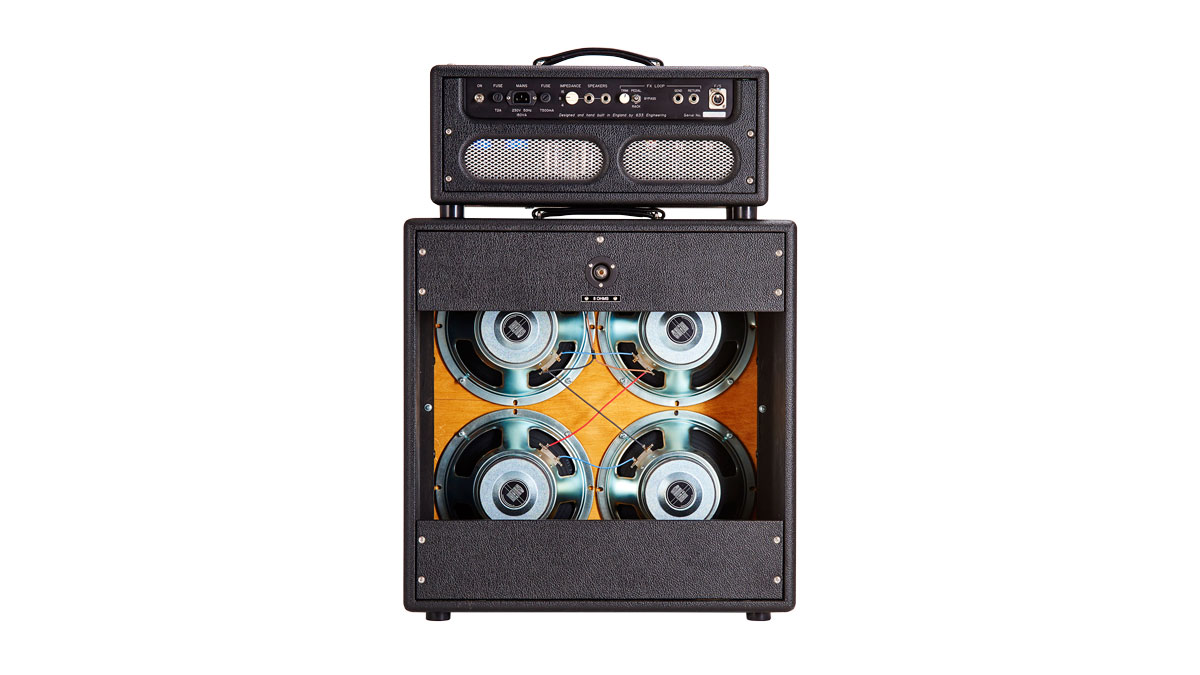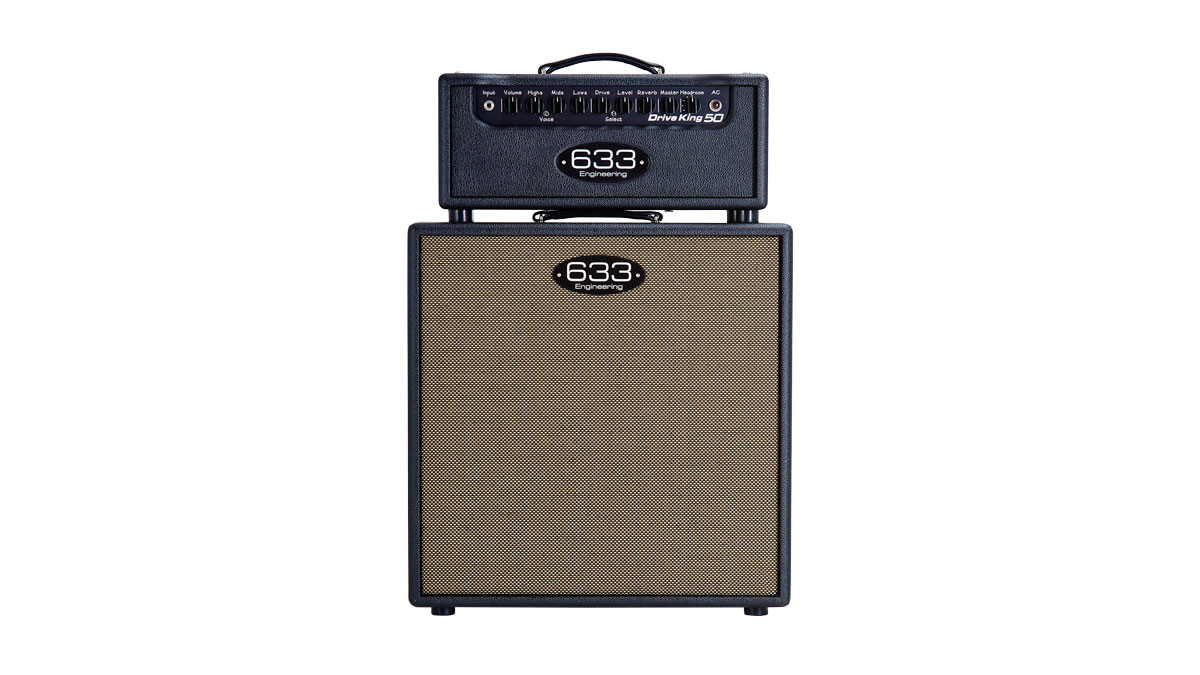MusicRadar Verdict
Simply one of the best heads we’ve ever plugged into.
Pros
- +
Unreal tone and sustain, with greatly expanded range for this type of amp.
Cons
- -
It’s expensive, but you get what you pay for… and then some.
MusicRadar's got your back
It’s been a busy year for 633 founder and chief designer, Cliff Brown.
He’s moved 633 into a new factory, developed new models, and fulfilled a growing order book, all while continuing a second burgeoning musical career fronting his own band.
However, 633 Amplification continues to be Cliff’s main focus and this month we’re shaking down one of its latest designs to taxi out onto the runway, the Drive King 50 head.
The Drive King 50 is a new addition to 633’s more-or-less standard range, given that every new build can be significantly customised to suit its owner. Visually, the Drive King 50 is pure 633, looking a little mean in all-black vinyl, but still with the 633 illuminated badge.
A closer look at the controls reveals a similar layout to the Dumble ODS and its many clones, with volume, high, mid and low controls joined by an overdrive section with separate drive and level knobs. There’s a three-position voice switch that emphasises mids or highs in Drive mode, together with a level control for digital reverb.
On the right is a global master volume and 633’s trademark headroom control, with five settings that progress from around 8 watts up to the amp’s full output of 50 watts. The simple back panel has a pair of speaker outlets with an impedance switch and a series effects loop with a bypass switch and a choice of two trimmable levels for rack and stompbox effects. There’s also a locking XLR socket for the Drive King’s two-button footswitch, which changes channels and toggles the effects loop.
Build and parts quality are exceptional, with the weight of a substantial pair of Hammond transformers offset by the aluminium chassis, which helps keep the Drive King head portable, as well as offering superior grounding.
The 633’s internals look more like those of a high-end recording desk, which isn’t surprising as Cliff was chief design engineer for Soundcraft in a previous incarnation. Overall, high performance meets solid reliability, and the head looks the part on top of its specially designed open-back cabinet, which houses a quartet of Celestion G10N-40 speakers.
Sounds
As with the Californian design that inspired it, the Drive King 50 isn’t an instant-gratification amp. Because the clean volume control cascades into the drive section, you need to determine the most useful overall balance between clean and drive levels.
On other D-style amps we’ve used, we tend towards slightly distorted cleans, which can be tamed by backing off on the guitar’s volume control. It’s common for the optimal gain window in such amps to be quite small, however, the Drive King’s range is very wide, going from sweet, almost clean Carlton-esque tones to the more characteristic D-style midrange squawk of Robben Ford and Matt Schofield, all the way to a respectable scooped thrash that will flatter any detuned or baritone guitar.
However, it’s in the low-to-medium gain ranges that the Drive King really excels, focusing the guitar’s character and reproducing it with unparalleled clarity. This is 633’s sonic calling-card - a multi-dimensional tip of the hat to tweed Fender and Dartford Vox, combined with extended highs that remain sweet and balanced, unearthly sustain and a player-friendly dynamic response that flatters any guitar plugged into it.
On some boutique designs, it’s common for every tiny mistake to be magnified, forcing the user into an all-or-nothing approach to every note and chord. However, the 633’s addictive dynamic response smooths out imperfections, putting the music first and making the whole playing experience rewarding and great fun.
Special effects, such as pinched harmonics, double stop bends, scrapes and slides are almost too easy to pull off and sound totally musical.

It’s been practically impossible to find fault with any 633 we’ve tried, and this amp is no different. It blends a range and clarity that we haven’t experienced on any other amp, with superb player-friendly dynamics.
On the thorny subject of price, it’s important to keep things in context. Firstly, the parts cost of a 633 amplifier has already increased by around £200 post-Brexit, and is set to continue rising. We’ve tried all the popular boutique D-style amps, which mostly have similar price tags, including one that was over double the price.
The competition doesn’t even come close, simply because the Drive King 50 is in a class of its own, yet costs no more than an entry-level Custom Shop Gibson or Fender. We think the Drive King’s sublime tone, exceptional performance and build quality more than justify the price, and our top award. We think it raises the bar for this amplification genre
At the apex of pro-guitar amplification, we’re spoiled for choice with an ever-increasing list of boutique brands covering everything from simple vintage replicas to modern multi-channel versatility.
In this crowd, an amp has to be really special to stand out - 633 has produced another superb design that takes on the best there is and send most of them packing. If you’re in the market, our advice is don’t delay. With short odds on more Brexit-related austerity, there’ll probably never be a better time to buy the amp of your dreams.
“A synthesizer that is both easy to use and fun to play whilst maintaining a decent degree of programming depth and flexibility”: PWM Mantis review
“I feel like that song had everything we needed to come back with”: Bring Me The Horizon’s Lee Malia on Shadow Moses, its riff and the secrets behind its tone, and why it was the right anthem at the right time
“I said, ‘Are we sure we can write a song about death?’”: The story of Mike + The Mechanics' classic No.1 The Living Years










